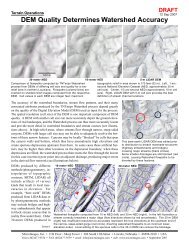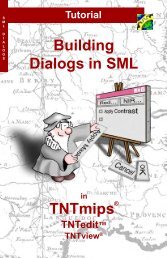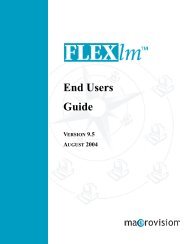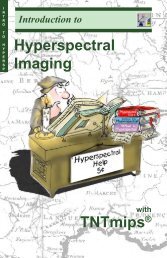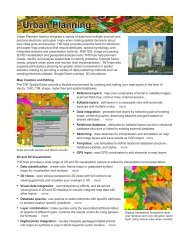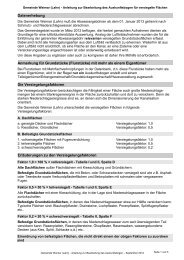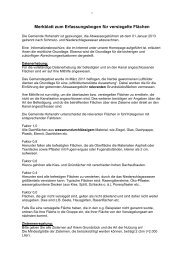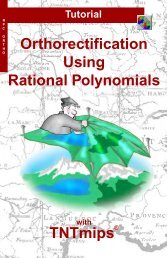Release Notes MicroImages, Inc. TNT-Products V. 6.8
Release Notes MicroImages, Inc. TNT-Products V. 6.8
Release Notes MicroImages, Inc. TNT-Products V. 6.8
You also want an ePaper? Increase the reach of your titles
YUMPU automatically turns print PDFs into web optimized ePapers that Google loves.
RELEASE OF RV<strong>6.8</strong> <strong>TNT</strong> PRODUCTS<br />
RV<strong>6.8</strong>). Implementation of automated testing of aspects of more interactive processes,<br />
such as spatial data editing, is currently being studied.<br />
• The <strong>TNT</strong> product release cycle has been lengthened over the past several years<br />
from 4 per annum to 3 and now to 2 per annum. This has been possible as the<br />
Internet and its increasing bandwidth to your desktop has enabled you to get direct<br />
access to error corrections. You no longer have to depend upon <strong>MicroImages</strong> to fix<br />
your errors and get them in the next release sent to you via air express on CD.<br />
Impact<br />
on Official <strong>Release</strong>.<br />
Even with a dual development system, it is impossible to eliminate error propagation—<br />
this results from correcting an error in a specific application that causes an error in some<br />
totally unanticipated and heretofore reliable application. It is impossible for <strong>MicroImages</strong><br />
each time we correct an error in the official release patch to check the literally millions of<br />
ways you might string together your interactive solution through our millions of lines of<br />
code. However, with a dual development system, each correction or patch you apply to<br />
the official release will improve that version’s overall reliability. Thus, the number of errors<br />
you encounter in your patched version of the official release will decay asymptotically<br />
with time.<br />
My selfish goal is to reduce the time <strong>MicroImages</strong> expends dealing with the errors you<br />
report by reducing the number of errors and the number of times each must be reported.<br />
As you know, your free <strong>MicroImages</strong> support is provided by professional computer scientists<br />
as it often involves complex technical issues. They are not specialists in any discipline<br />
to which you plan to apply<br />
your <strong>TNT</strong> product. However, more and more of our<br />
independent resellers are able to offer you assistance<br />
in how to design a geospatial ap-<br />
plication in your discipline, provide local training<br />
in your language, and immediate<br />
application support<br />
by phone or email. It is my hope that under this new error management<br />
system, our software support engineers will now have more time to devote to put-<br />
ting computer systems into place to catch errors in our nightly builds of all the <strong>TNT</strong><br />
software and manage your error identification and correction more efficiently. They can<br />
then<br />
put more of their time into working with those of you working with us on the Development<br />
Version for the next release.<br />
New Error Management System<br />
Two<br />
Code Bases.<br />
A new <strong>TNT</strong> error management and associated patching system has been established<br />
for use with the <strong>Release</strong> Version of <strong>6.8</strong> (designated as RV<strong>6.8</strong>) of the <strong>TNT</strong> products.<br />
Patches obtained and applied to correct the errors in RV<strong>6.8</strong> do not include any features added for the<br />
next version of the <strong>TNT</strong> products.<br />
Prior to RV<strong>6.8</strong>, a single source code base was maintained by <strong>MicroImages</strong> and all error<br />
corrections were made in that code base. Immediately after a new release was shipped<br />
on CD, changes to that code base began for the next version. Typically, the most complex<br />
changes to core features (for example, to the geospatial rendering engine (GRE),<br />
RVC file structure, topology management, …) are begun immediately after release.<br />
This is necessary since these core items impact many other aspects of the operation of<br />
MICROIMAGES MEMO 18<br />
5 MAY 2003



